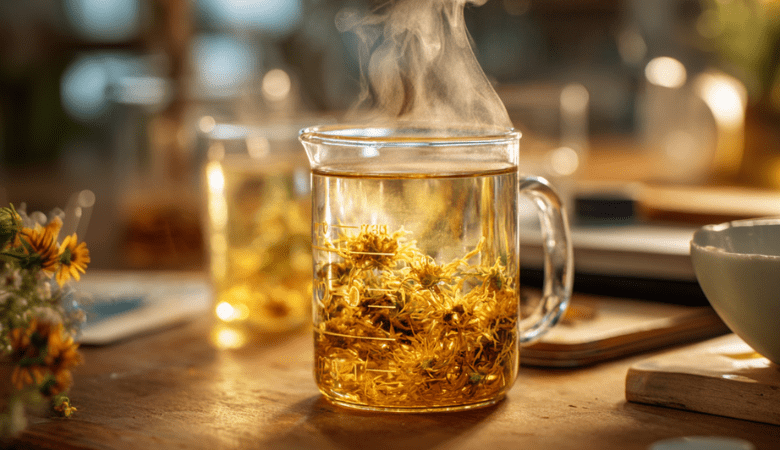Your Cart is Empty
FREE SHIPPING ON ALL ORDERS $75+
If you’re new to Kanna supplements, you might wonder: how is Kanna made? This ancient South African plant, known scientifically asSceletium tortuosum, has grown in popularity for its mood-enhancing and stress-relieving properties. But before it reaches you as capsules, powders, or tinctures, Kanna undergoes a detailed process of harvesting, drying, extraction, and finishing.
This article will walk you through the journey of Kanna—from raw plant to supplement form—so you gain a clear understanding of how these natural products are created.
Kanna is harvested from theSceletium tortuosum plant, then carefully dried and processed to preserve its active compounds.
Extraction methods, including traditional and modern techniques, concentrate the mood-enhancing alkaloids for use in supplements.
The finished Kanna products come in various forms like powders, capsules, tinctures, and teas, tailored to consumer preferences.
Before diving into how Kanna is made, it helps to know what it is. Kanna is a succulent plant native to South Africa, historically used by indigenous peoples as a natural mood booster and relaxant. Its key active ingredients—alkaloids such as mesembrine—interact with brain chemistry to reduce anxiety and elevate mood.
If you’re curious about safety, you can read more in our guide on whether Kanna is safe for everyday use.
The journey begins with harvesting theSceletium tortuosum plant, which typically grows in arid, rocky areas of South Africa.
Harvesters collect the aerial parts of the plant—mainly the leaves and stems—when the plant reaches maturity. The timing of harvest is important because it affects the concentration of active alkaloids.
Usually done by hand to protect plant quality
Plants are cut just above the root to allow regrowth
Harvesting season depends on climate and plant growth cycles
Once harvested, the Kanna plant material is dried carefully. Drying slows down the breakdown of active compounds and prepares the plant for extraction.
Sun drying: Traditional method, placing plant parts in a shaded, well-ventilated area
Controlled drying: Modern facilities may use dehydrators or climate-controlled rooms to standardize moisture levels
Proper drying is crucial because too much moisture can lead to mold, while overdrying can reduce potency.
After drying, the Kanna plant material is ground into a fine powder. This increases the surface area for extraction and makes it easier to process in later steps.
Grinding machines or mills are used
Powder consistency is checked to ensure uniformity
Sometimes, the powder is sifted to remove stems or larger particles
If you’re planning to use Kanna at home in its powdered form, check our Kanna dosage guide for safe and effective amounts.
The most important part ofhow Kanna is made is the extraction of its active alkaloids. These compounds—mesembrine, mesembrenone, and others—are responsible for Kanna’smood-enhancing effects.
Traditional fermentation: Indigenous methods involve fermenting the plant to increase alkaloid potency naturally.
Solvent extraction:Modern commercial methods often use food-grade solvents (like ethanol or water) to pull alkaloids from the plant powder efficiently.
Supercritical CO2 extraction: An advanced technique using carbon dioxide under high pressure to extract pure alkaloids without harmful residues.
Not sure which type is better? Learn the difference betweenKanna extract vs. whole plant.
Following extraction, the raw extract is purified and concentrated to enhance potency and safety.
The solvent is removed via evaporation or filtration
The extract may be standardized to contain consistent alkaloid levels
Some products undergo additional refining to remove impurities
This step ensures that consumers get a predictable and high-quality supplement every time.
Once the purified Kanna extract is ready, it’s formulated into consumer-friendly products.
Powder: For mixing into drinks or making teas
Capsules: Convenient, pre-measured doses popular for daily use
Tinctures: Liquid extracts taken sublingually for faster absorption
Chewing blends: Sometimes combined with other herbs for traditional-style use
If you’re unsure which form to choose, here’s a guide on how to take Kanna based on your needs.
High-quality Kanna products undergo rigorous testing to ensure they meet safety standards and label claims.
Laboratory analysis confirms alkaloid content
Microbial and heavy metal testing guarantees safety
Packaging is designed to protect product freshness and prevent contamination
If you’re new to supplements, you may want to learn how to read Kanna labels before making a purchase.
From the wild harvest in South Africa to the supplement on your shelf, the process of making Kanna involves several careful steps:
Harvesting the mature plant parts
Drying to preserve active compounds
Grinding into powder for easier extraction
Extracting alkaloids using traditional or modern methods
Purifying and standardizing the extract
Formulating into capsules, tinctures, or powders
Testing andpackaging for consumer use
Each stage plays a crucial role in delivering a safe, effective product that offers the well-known benefits of Kanna.
Understanding how Kanna is made can help you appreciate the care behind quality supplements. If you’re considering trying Kanna, look for products that clearly describe their extraction process and quality testing. This ensures you receive the best possible experience from this natural mood enhancer.
If you’re wondering how long Kanna lasts once you buy it, storage tips and potency timelines can help you plan ahead.
Yes, Kanna is generally legal in the United States, though local regulations can vary. You can read our full breakdown in Is Kanna Legal in the US?.
Yes, some people choose to smoke Kanna for faster effects, though it’s not the most common consumption method.
Kanna is not typically screened for in standard drug tests. Learn more in Will Kanna Fail a Drug Test?.
The best time to take Kanna can depend on your goals—morning for focus, evening for relaxation.
Yes, Kanna products do have a shelf life. Check out our guide on Does Kanna Expire? for storage tips and expiration timelines.
Comments will be approved before showing up.
